More than Words: The Re-purposed Book
Britt Aamodt reviews the new Traffic Zone exhibition, "X-Libris: The Re-purposed Book," with a wide-ranging essay on the strange and wonderful terrain of contemporary book art.
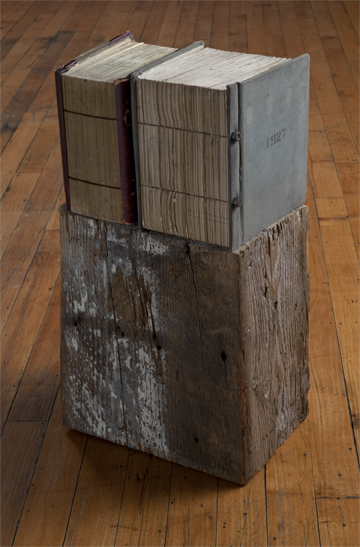
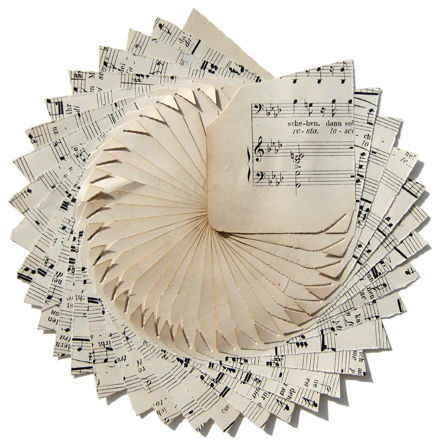
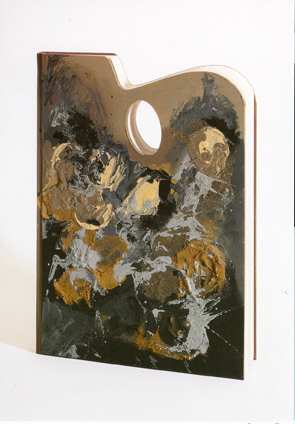
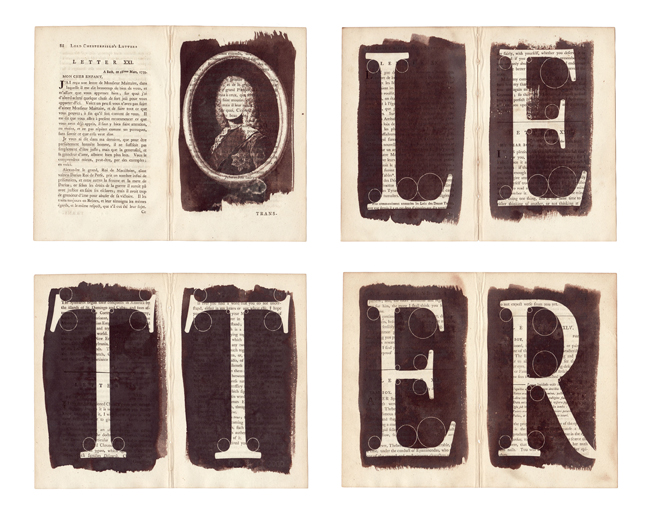
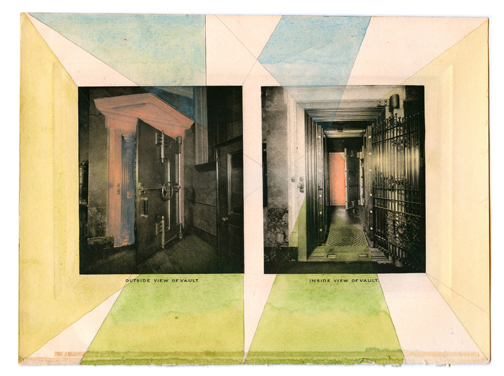
THE TROUBLE WITH BOOKS IS THEY MAKE YOU DO MAD, CRAZY THINGS. Take, for example, medieval lovers Francesca and Paolo. Secreted in a room, Francesca, the wife of Gianciotto Malatesta, and Paolo pored together over the romances of Lancelot and Guinevere. The passions bridled within the text were set loose as shoulder rubbed shoulder and eye met eye. As these platonic acquaintances read the passages together, one thing led to another — a fluttering eyelash here, a touch of the hand there — and Francesca and Paolo kissed. Later, when Gianciotto discovered the affair, the lovers blamed their newfound affections on the stories they’d shared. In other words, the book made them do it.
Alas, their literary defense wasn’t enough to save them from Gianciotto, who subsequently murdered the lovers in a fit of rage. But such are the twists of fate and the perversity of poetic irony that Francesca and Paolo, compelled by a fictional romance to their doom, would in a sense survive death, thanks to the devices of a book. Dante Alighieri immortalized the ill-starred lovers in a canto of The Inferno. Centuries later, readers still feel Francesca and Paolo’s ill-fated burn and, perhaps, suffer one of their own in the passionate embrace of Dante’s storytelling.
X Libris: The Re-Purposed Book taps into the heart of the book as object, metaphor, human artifact, cultural signifier, and memory keeper. The 14 national and international artists represented in this exhibition at Traffic Zone Gallery have used the book as a springboard for visual statements that explore the creative resonance of bound volumes and text. The artists have drilled holes through books, shredded pages, reproduced photocopies in graphite, rearranged text, cut and pasted, and painted over covers — all in the name of book art. The art form may not elicit clandestine love affairs, but it’s been known, nonetheless, to lead bibliophiles and other guardians of the intact and unblemished book to paroxysms of lusty indignation.
REDEFINING THE SACRED OBJECT
Harriet Bart, Minneapolis-based artist and co-curator of X Libris (with Lisa Nankivil and Dennis Michael Jon), says that when she first started re-purposing books “even art critics would ask, ‘What do people think about what you’re doing to these books?’ And I would say, ‘I don’t understand that [attitude]. The book is ubiquitous. I’m not using first editions. I’m using books that would otherwise get put in a landfill or a garage sale.'”
Bart doesn’t know how the idea of book as sacred object began. “Maybe it started during World War II, when the burning of books meant the destruction of culture. But that’s been the case throughout time: The library of Alexandria was burned because, in antiquity, a library stored the memory of an entire culture.”
In 2009, Bart’s book art doesn’t excite the bibliophilic protest it once did. Books are understood to be mass-produced objects. You can desecrate one, but you can’t desecrate them all, as morally-motivated book burners and library sanitizers have also come to realize. You can excise The Catcher in the Rye from your daughter’s public school library but you can’t remove every copy from every library, bookstore, and home bookshelf around the world. These days, books are as commonplace as candy bar wrappers and beer cans.
Visual artists have long seen the potential of the bound volume and its pages as raw material for their work. The 14 artists in X Libris are book artists, some work in the form exclusively, others also practice in other media (painting, sculpture, collage), says Lisa Nankivil, exhibit co-curator and Minneapolis-based oil painter. Nankivil, herself, is not a book artist; but, as program committee chair for the Traffic Zone artist cooperative, she committed the gallery space and her curatorial eye to the monumental task of soliciting work from an international roster of book artists.
Exhibited artists include: Sam Winston (England), Helmut Löhr and Wolfgang Nieblich (Germany); Douglas Beube and Marshall Weber (NYC). Four artists (Philip Barber, Harriet Bart, Scott Helmes, and Wilber “Chip” H. Schilling) are based in the Twin Cities. There are also artists from Chicago (Megan Greene), St. Louis (Buzz Spector), Washington, D.C. (Molly Springfield), Princeton, New Jersey (Sarah Stengle), and San Francisco (Jill Sylvia).
In the exhibition catalogue, curator Dennis Michael Jon calls X-Libris a “primer.” The show promises a sampling of contemporary book art as interpreted by a geographically diverse body of artists.
A BRIEF HISTORY OF BOOK ART
“The contemporary era of book art probably began with William Blake,” says Bart, referring to the English artist and poet (1757-1827) who wrote, illustrated, printed, and colored books of poetry, including his Songs of Innocence and Experience. Max Ernst’s Une Semaine de Bonté (1934) is an early example of the type of work you’ll find in X Libris-book art (as separate from the fine press edition) that uses the book or text as a starting point for collage, assemblage, sculpture, painting, etc. For Une Semaine de Bonté, Ernst ripped pages from Victorian novels and arranged them in collages that were thematically removed from the books’ original content.
______________________________________________________
“I grew up understanding the book as an icon, believing that the only way you live on is in memory, and that’s what the book is about — it’s about keeping track and recording, remembering.”
______________________________________________________
Dieter Roth (1930-98) took book deconstruction a step further. He bored holes in books, allowing the viewer to see more than one page at a time. He re-purposed “found” comic books, printers’ end papers, and newspapers, and transformed them into new book creations, with their own small print runs. In the late 1960s, British artist Tom Phillips purchased an obscure Victorian novel, and then proceeded to cut and paste text, cover pages with gouache and ink, and emphasize words or blot them out. The resulting book, A Humument: A Treated Victorian Novel (1970), excavated material from the original book to draw out fresh stories and motifs.
X (BOOK)MARKS THE SPOT
Though X Libris: The Re-Purposed Book collects “contemporary” book art, the pieces span the years from 1990 to 2009, representing both the artists’ individual preoccupations as well as larger trends and innovations in the medium over a twenty-year time period.
Harriet Bart, who has two pieces in the exhibit, is primarily concerned with memory. “Mine was a secular Jewish family. I grew up understanding the book as an icon; we didn’t have anything like the Christian icons. So, the book was important in my household: we were keenly aware of the value of the book and of the written word. I grew up believing that the only way you live on is in memory, and that’s what the book is about — it’s about keeping track and recording, remembering.”
In Ledger Domain (2009), Bart pairs thick, dusty accounting ledgers salvaged from an abandoned building with a hunk of wood removed from the basement of the Traffic Zone building. The wood block sat in Bart’s studio for fourteen years before she realized that, if she stood the ledgers on top of the block, the vertical lines of the pages would mirror the vertical striations of the wood.
Like Dieter Roth, New York artist Douglas Beube violates the surface of his books by drilling holes through the centers. The stacked books of Zoom +/- (2007) are equipped with a magnifying glass to draw out random words mined by the artist’s excavations. Megan Greene and Scott Helms both work with the page, rather than the bound volume. Greene’s #81 (2009) is a collage of Audubon bird illustrations — the distinct parts of the bird dissolve, becoming leaf-like in their new arrangement. Helms’s Haiku #35 (2006) is a visual poem; the three-line literary form remains intact, while collaged book pages cue non-literal lines of verse
In this medium, the meanings of book and page are highlighted, subsumed, or transcended to demonstrate the use of texts for purposes other than reading. Helmut Löhr uses musical scores to create a fan in When I dream with the people of the world tonight (2006). Acrylic paint re-conceptualizes the covers of found books in The Painter’s Book (1990) and Death and the Fool (1995) by Wolfgang Nieblich. Jill Sylvia, born into a family of accountants, plays on her ancestry with Untitled (Balance Sheet 5) (2009), cutting a balance sheet into a fine lattice.
The French word souvenir, the title of Marshall Weber’s 2002 work, means “memory” or “to remember.” His small book incorporates yearbook photos — someone else’s memories — from bygone eras. Wilber H. Schilling prints the letters L-E-T-T-E-R on pages of Lord Chesterfield’s letters to his son, and Buzz Spector shaves the pages of a found book into a wedge that retains the text block while obscuring the meaning of the text. Molly Springfield masterfully reproduces photocopies of Marcel Proust’s books in graphite (so masterfully that Bart, when she first saw the pieces, thought they were photocopies). Playing on the notion of book-as-archive, New Jersey-based artist Sarah Stengle revives cast-off photos of bank vaults in rays of watercolor, painted on found book pages.
Though many of the works in X Libris are grounded in cleanly articulated concepts, others tumble into the muddy well of emotion. Sam Winston takes a dip in those murky waters with the master of dramatic emotion, William Shakespeare: the artist clipped and cut his way through a copy of Romeo and Juliet. He separated the words into three categories — indifference, rage, and passion — and worked them into a series of six typographical illustrations that symbolize the three emotions. Rage juts out at sharp angles, but passion explodes in feminine curves, like Juliet at her window, or Francesca and Paolo at the moment of their first stolen kiss.
Books may cause people to fall in love, or start a revolution, or maybe just nudge the reader into sitting indoors on a sunny day. But people can do crazy, wonderful things to books as well – and, for their part, the X Libris artists tear them apart, dress them up, and grant them a second life as visual, rather than just literary, works of art.
*****
Exhibition details:
X Libris: The Re-Purposed Book, an exhibition of contemporary book art, runs through October 15 at Traffic Zone Gallery, 250 Third Avenue North, in downtown Minneapolis.
Traffic Zone Gallery will host an opening reception for X-Libris: The Re-Purposed Book 6 – 9 pm, Saturday, September 12. Then at 7 pm, Tuesday, September 22, poet Eric Lorberer will give a reading of poems related to the theme of erasure, which will be followed by a public reception in the gallery.
About the author: Britt Aamodt‘s book on Minnesota’s contemporary cartoonists (Off Color) is coming out fall 2010 from the Minnesota Historical Society Press. Aamodt reports on the arts for KFAI radio in Minneapolis, and is the founder of the radio play group Deadbeats On The Air.